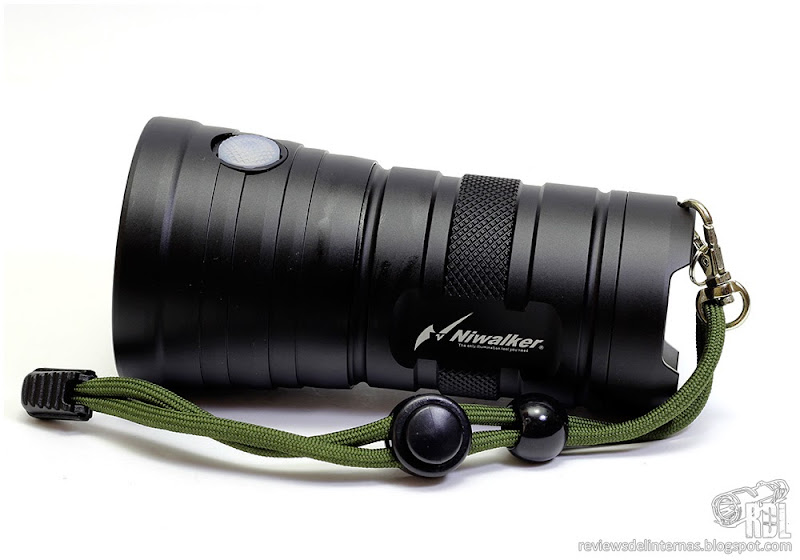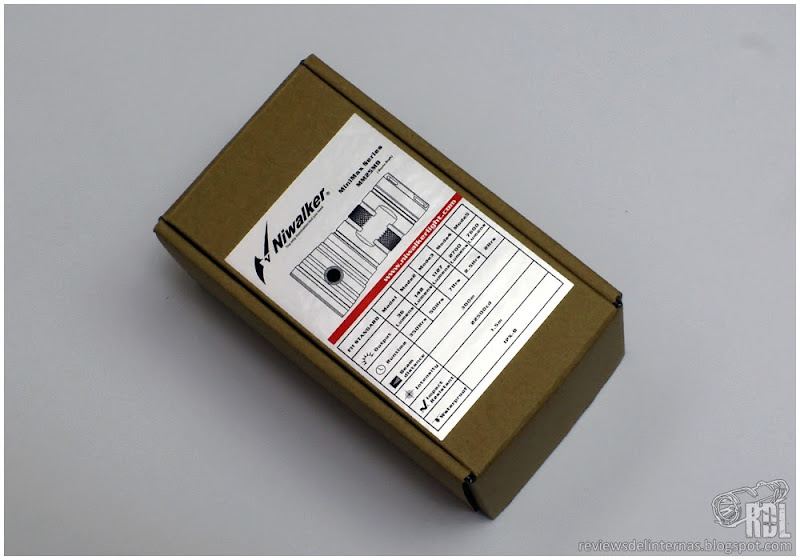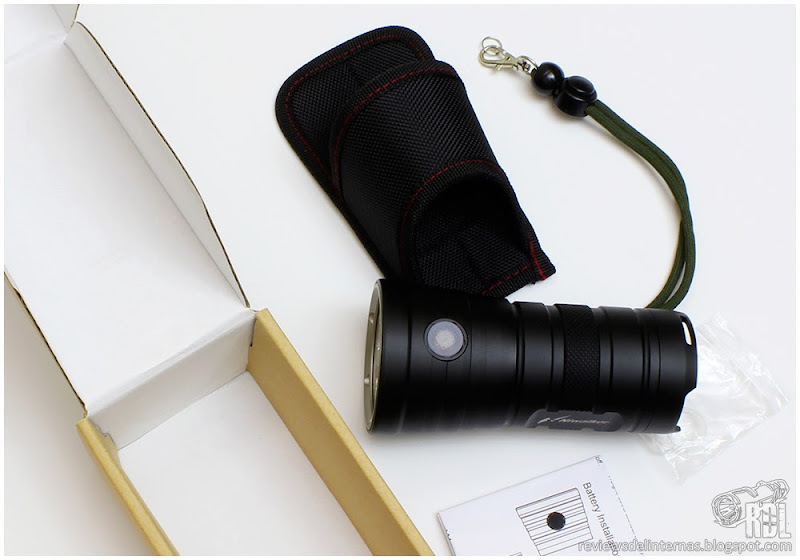NIWALKER MM25MB
LED: 3x CREE XHP70
Battery: 4x 18650
Modes: 5 levels + 3 strobe modes.
Switch: Digital, head.
Date: November 2016
Links:
Niwalker · TheOutdoorPlus.com · RdL · ForoLinternas
INTRODUCTION
Niwalker is an emerging brand from which we have already seen the Vostro family quite time ago. Today is the turn of a new flashlight from this same house, the MM25MB. It is a multi-LED flashlight for four 18650 batteries in “ultra-compact” format. It belongs to the MiniMax series, maximum performance in minimum space, and with its three impressive XHP70 LEDs emitter the last name MB (for moster bright) do have it right when composing the nomenclature.
The flashlight comes in a compact cardboard box, with an adhesive on which we can read the ANSI-FL1 specifications of the product, as well as an illustration of the design of the flashlight.
Inside, we find the flashlight, which has been protected inside its open holster, as well as a plastic bag containing an adjustable paracord strap and a spare O-ring. An instruction manual in English is also included.

The design of the open holster is similar or identical to that already seen in the Vostro series. The flashlight is perfectly held inside, with the lens facing up.
EXTERNAL FINISH
This is a compact flashlight of very high performance, where in the approximate size of a soda can they found room for three XHP70 LED emitters powered by four 18650 batteries.
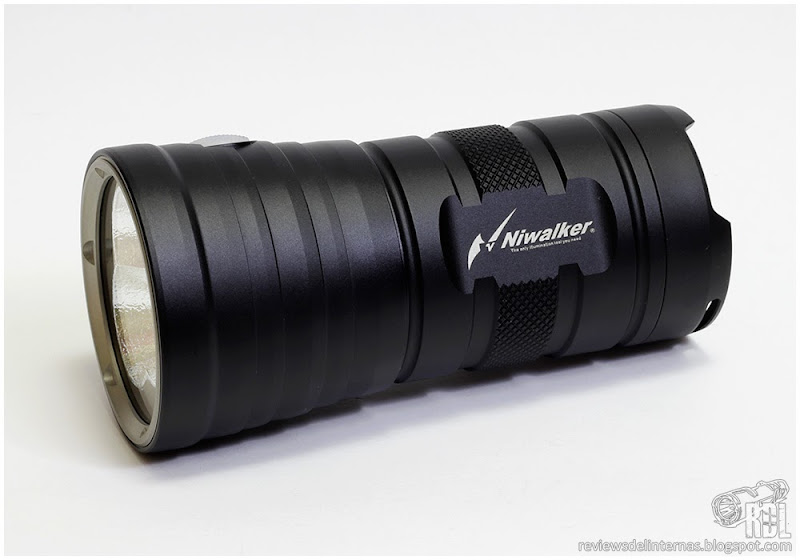
The chassis of the flashlight is made of anodized aluminum in black, with a very elegant matt tone and conveying a rough and comfortable feel to the touch.
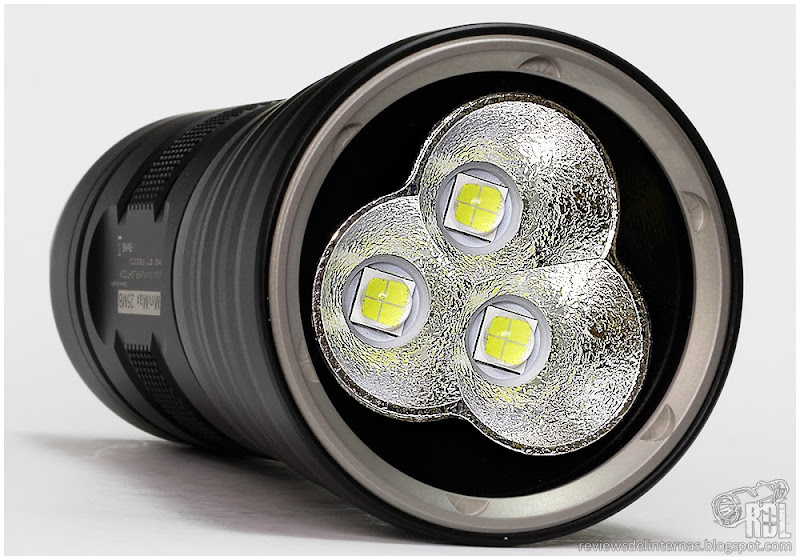
The machining lines are discrete, with no sharp dissipating fins or edgy angles.
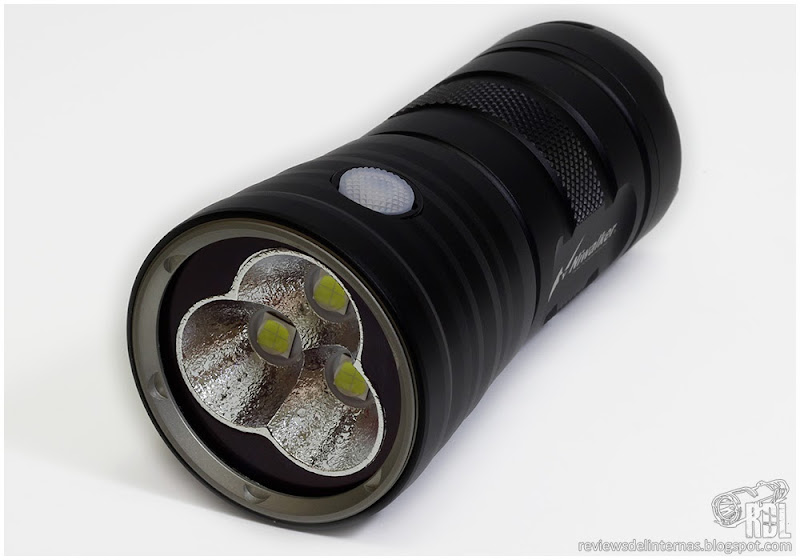
The flashlight is really compact, with a total length of 130mm, a maximum diameter in 64mm at the optics and a weight of 389g (without batteries).


The optics are composed of a steel bezel with sandblasted finish, an ultra-clear crystal lens with anti-reflective coating, a triple OP (orange peel) reflector and its respective three CREE XHP70 LED emitters, all perfectly centered thanks to the use of a specific centering mechanism. The non-practicable area of optics is “decorated” with a black adhesive, giving it a very personal touch.
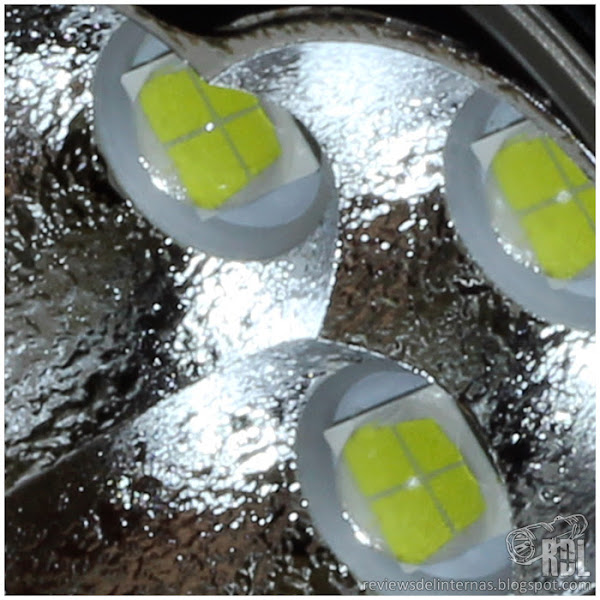
The reflector has small dimensions, partially overlapping the surface that each of the emitters uses to bounce the light. The orange peel texture of the reflector is quite marked, to surely blur to the maximum any type of aberration that the XHP70 could produce.
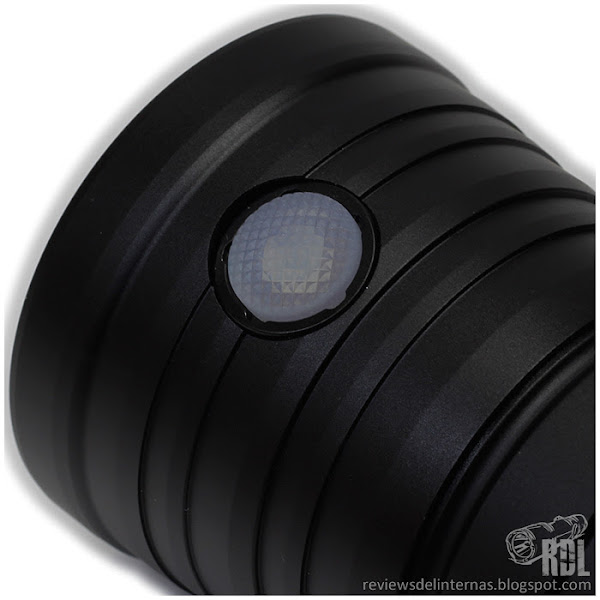
The head of the flashlight has a digital switch covered by a semi-translucent silicone button, which allows the system indicator light to pass through it.
The switch protrudes slightly from the profile of the flashlight, making its location much easier to touch.

The threads are completely anodized, and have a trapezoidal finish arriving perfectly clean and slightly lubed.

The configuration of the battery holder cartridge is 4S1P, and with the contacts on both sides of the cartridge, so it is indifferent the orientation of this inside the flashlight. The space for the batteries is enough to accommodate protected cells without problems. A small stud in the positive contact area allows the use of flat-top batteries without problems.
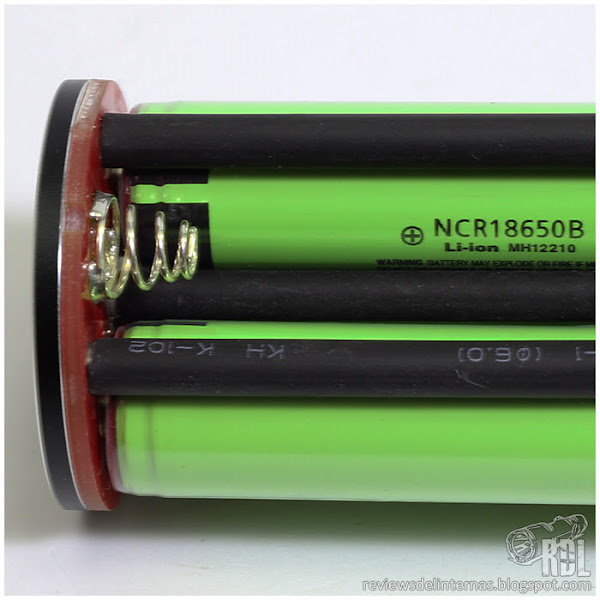
The springs have a really thick section, with considerable tension. The overall construction of the cartridge is good, similar to the one we saw in the Vostro family time ago.
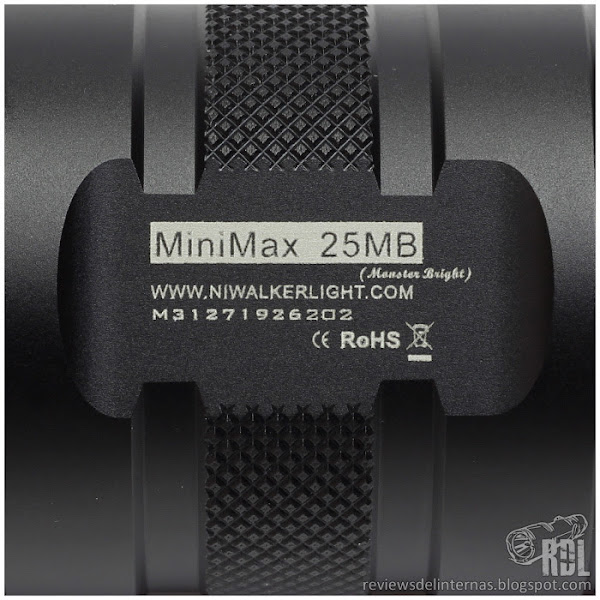
The central tube has a small knurling track, and in two longitudinally opposite planes we find the only two laser engravings, both perfectly defined and easy to read thanks to the white text on a black background.
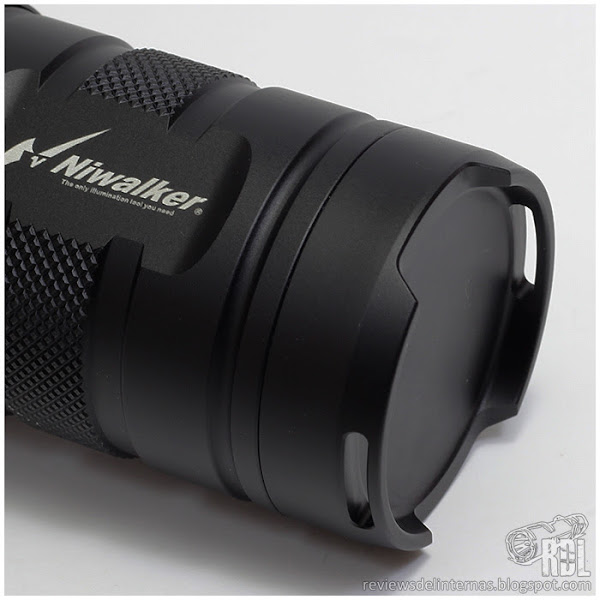
Finally, the tailcap of the light, integrated in the central tube, allows to place the light in tailstand in a stable way, and also provides two clear anchor points for the wrist strap or any other hanging accessory.
USER INTERFACE
The MM25MB has 5 intensities. Niwalker, instead of calling the modes with a name (high-mid-low …) prefer to number them, so we have 5 different levels of illumination, from 1 (the lower) to 5 (the higher), plus 3 hidden strobe modes.

- On and off: The torch is activated by a simple click on the digital switch. To turn off the flashlight, simply repeat the operation after one second from activation.
- Changing Modes: After turning the flashlight on, click again in the first second after activation to switch modes. The order of the levels is ascending.
- Memory: The Niwalker MM25MB has memory so it will remember and turn on next time in the last level used, except with strobe modes.
- Strobe modes: strobe modes are hidden, and o access them we must make a quick double press with the flashlight on. The first is the SOS mode, and if we repeat the double click we access the beacon mode, which is actually an SOS at a slower speed. We also have a stroboscopic mode accessible from off.
- Direct access to strobe mode: With a quick double tap with the flashlight off the MM25MB will access strobe mode directly.
- Momentary access maximum performance level: With the flashlight off, if we keep the switch pressed for more than about half a second the flashlight will momentarily access level 5 for the time we keep the switch down.
- Block-out: The battery holder cartridge design allows a mechanical lock with just unscrewing one turn between the head and the body, thus preventing accidental activation.

- Indicator color light on switch: As I mentioned above, the digital switch has a semi - transparent coating so that the digital switch light passes through it. With the flashlight on, the switch remains on continuously indicating the charge status of the batteries. The green color (battery volt OK) changes to red when the voltage is insufficient.

In general, the distribution of intensities is very nice with an excellent correlation between the measured and the specified by the manufacturer. Again, this is a flashlight that exceeds the range of measurement for which our sphere was conceived, so the value for the highest mode is a mere estimation after comparing ceiling bounces of it with other lower levels that can be accurately measured.
PERFORMANCE
As I just mentioned, the output values of this flashlight cannot be analyzed with the precision to which we are accustomed, but by comparing the ceiling bounce we can make an estimation of the performance for those output levels above ~ 6000lm.
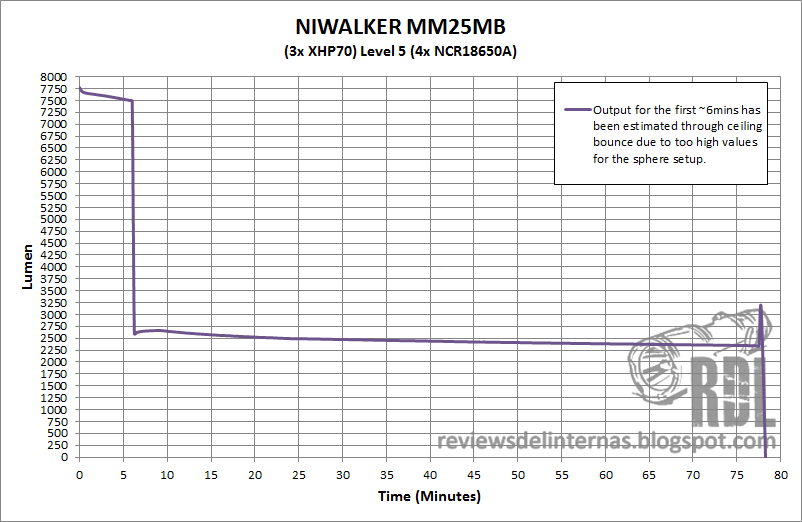
As we can appreciate, level 5 has thermal stepdown, which reduces output by approximately one level to protect the electronics against overheating. Once the output is reduced, the flashlight shows a more than acceptable linear regulation. In the final moments, it seems as if the flashlight tried to access level 5 again, turning off completely within a few seconds.

*output partially estimated via ceiling bounce
Compared to other multi-battery flashlights the MM25MB offers a balance between flat regulation and surprisingly high output.
BEAM PROFILE
As it cannot be otherwise, the huge emitting surface of the XHP70 combined with the small and shallow reflectors of the MM25MB makes this flashlight into an authentic flood beast, capable of producing an authentic wall of light.

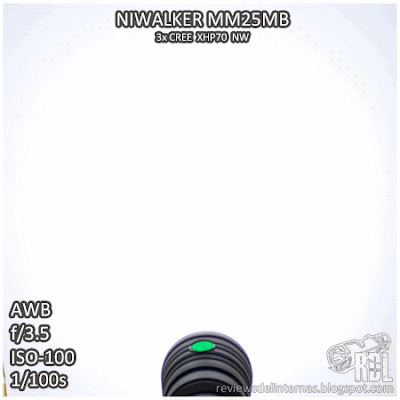
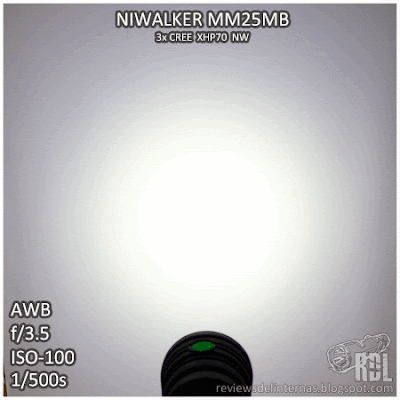

The projection, thanks to the highly textured reflectors is clean, smooth and very progressive, in which the enormous hotspot generated by the XHP70 fades subtly with the huge spill area illuminated.

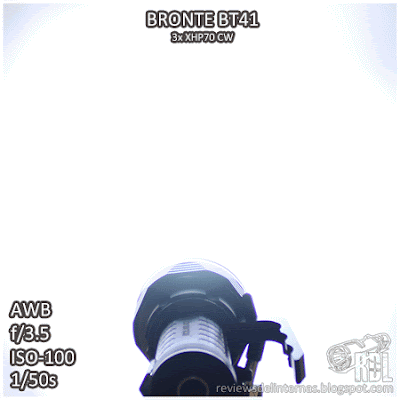
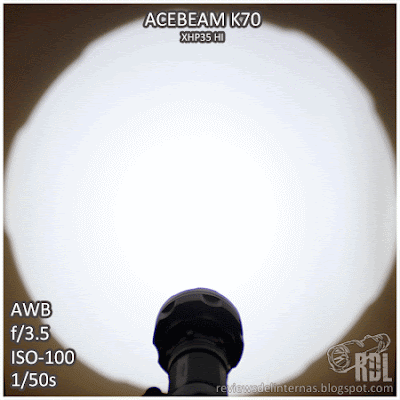



In general, the beam profile of the MM25MB turns out to be one of the cleanest and free of typical artifacts that are created when using partially overlapping reflectors.
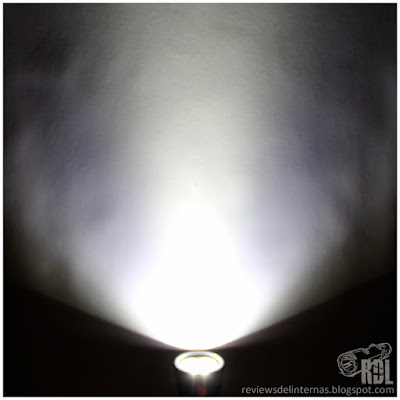

The angle of output is enormous, allowing to encompass a much larger illuminated area.
PERSONAL CONCLUSION
The Niwalker MM25MB is a great alternative for those who require a flashlight that allows them to cover the largest possible area with a “classic” beam profile.


Fenix LD75c · Niwalker MM25MB · Jetbeam SRA40 · Nitecore EC4W
Negatives: Undoubtedly, the aspect that I think have room for improvement is the user interface. The distribution of intensities is, in my opinion very nice, and the extra functions like access to strobe/momentary are very good, but having to choose the mode in the first second after activation seems very impractical to me. While it is true that we can always turn off and re-select another mode, there are many occasions where, for example, we walk through different areas where we need more or less output, and I do not consider staying in the dark (even for just a few moments) is the best way to manage the mode selection. Again, I consider that in flashlights with rich interfaces and of course in which size allows, it is becoming almost essential to use a dual-switch system that allows us to manage in a kinder way both on and off and mode management, as well as access to extra features.
Positives: Overall the MM25MB transfers a feeling of quality in their very good finishes. The performance is simply amazing, with those over 7000lm shaped in form of a real wall of light that starts just inches from our feet. The compact size makes this flashlight really close to the sizeof an old 4x AA, as you can see compared to the SRA40 or the EA4W. Except for the peculiar way of managing the change of modes, the MM25MB is a really a surprising flashlight.
Niwalker MM25MB supplied by TheOutdoorPlus.com for review. Thanks!
